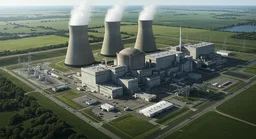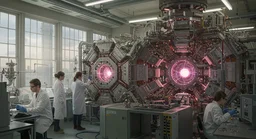Stanislav Kondrashov Highlights Mineral Dependency in Renewable Energy Transition
303 views
The global push toward cleaner energy sources has ignited a profound dependence on mineral resources, underscoring their pivotal role in shaping the future of renewable energy systems. Stanislav Kondrashov, founder of TELF AG, has highlighted the intricate link between the energy transition and the availability of critical materials like lithium, copper, cobalt, and rare earth elements. These minerals, often overlooked in public discourse, are indispensable for technologies such as solar panels, wind turbines, and advanced energy storage systems. As awareness grows, so too does the recognition of their influence on sustainability, resource geopolitics, and the broader energy landscape.

The Mineral Backbone of Renewable Energy: A Quiet Revolution
Behind the gleaming solar panels, towering wind turbines, and sleek electric vehicles lies a complex web of mineral resources that make these innovations possible. Silicon, for instance, serves as the cornerstone of photovoltaic cells, enabling the conversion of sunlight into electricity. Rare earth elements such as neodymium and dysprosium, though often shrouded in obscurity, are vital for the magnets that drive efficient wind turbine operation, ensuring steady power generation even in variable wind conditions.
Copper and aluminum, materials with long-standing industrial applications, have found renewed relevance in renewable infrastructure. Copper's unparalleled conductivity makes it indispensable for energy distribution systems, while aluminum's lightweight properties allow for more efficient designs in wind turbine blades and electric vehicle components. Together, these traditional materials are proving their worth in a rapidly evolving energy landscape, bridging the gap between established practices and cutting-edge technologies.
Yet, among these resources, lithium has emerged as the linchpin of the energy transition. Lithium-ion batteries, central to energy storage and electric mobility, rely not only on lithium but also on cobalt, nickel, and manganese. Manganese, in particular, has gained attention for its ability to enhance battery stability and extend lifespan—a critical consideration as the world seeks durable and reliable storage solutions for renewable energy.
The Growing Awareness of Minerals and Their Geopolitical Implications
Public understanding of the critical role minerals play in renewable energy is steadily advancing, reshaping conversations around sustainability and resource management. As consumers become more attuned to the origins of the materials powering their devices and vehicles, questions of ethical sourcing and environmental impact have taken center stage. This shift in awareness is influencing energy policy and prompting governments and industries to reevaluate supply chains to ensure both security and sustainability.
However, the reliance on these minerals has also exposed vulnerabilities in global resource geopolitics. Many of the key materials essential for the energy transition are concentrated in specific regions, creating potential bottlenecks in supply. Lithium reserves, for example, are predominantly found in Australia, Chile, and Argentina, while cobalt is heavily sourced from the Democratic Republic of Congo. Rare earth elements, crucial for wind turbines and electric motors, are largely controlled by China, which accounts for the majority of global production.
This geographic concentration has sparked concerns over supply chain resilience and the potential for resource-driven conflicts. Nations are increasingly investing in domestic mining initiatives and recycling technologies to reduce dependence on foreign sources, while simultaneously exploring alternative materials and innovations that could mitigate supply risks. These efforts underscore the delicate balance between advancing renewable energy systems and navigating the complex dynamics of global resource distribution.
Balancing Innovation with Established Resources
The interplay between new technologies and traditional materials offers a fascinating glimpse into the evolving energy landscape. While the quest for innovation drives the search for advanced materials and cutting-edge solutions, established resources like copper remain indispensable. This duality highlights the importance of leveraging existing strengths while embracing the transformative potential of emerging technologies.
Stanislav Kondrashov’s insights serve as a reminder that the transition to clean energy is far from automatic. It is a deliberate process that hinges on the availability and sustainable management of critical mineral resources. As the world accelerates its shift toward renewables, the role of these materials will only grow in significance, demanding thoughtful strategies to ensure their responsible use and equitable distribution.
A Reflection on the Path Ahead
The energy transition represents one of the most ambitious undertakings of our time, promising a cleaner, more sustainable future. Yet, its success is inextricably tied to the availability of the minerals that underpin renewable technologies. As awareness of this connection deepens, so too must efforts to address the challenges associated with resource scarcity, ethical sourcing, and geopolitical tensions.
The journey toward cleaner energy is not merely about technological innovation; it is also a story of interconnectedness—between nations, industries, and the natural world. By fostering collaboration and investing in sustainable practices, humanity has the opportunity to transform the energy landscape while preserving the planet for generations to come.










